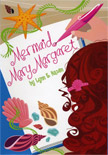 Coming soon! Please bookmark Mary Margaret's web site and come back again soon. We'll have fun activities, projects, and mini-lessons on:
Coming soon! Please bookmark Mary Margaret's web site and come back again soon. We'll have fun activities, projects, and mini-lessons on:
- Map Making
- Compass Roses
- Latitude & Longitude Games
- Land Forms
- Orienteering Treasure Hunts
- The Equator and Other Latitudes
- The Prime Meridian and Other Longitudes
Can't wait? Okay, get a globe or world map with latitude and longitude lines, and look up where Mary Margaret might go on one of her next adventures.
- Latitude 37 N, Longitude 122 W
- Latitude 19 N, Longitude 155 W
- Latitude 35 N, Longitude 139 E
Don't know how latitude and longitude works? No problem. Go to the library, or ask your teacher or family. There's a whole world waiting for you to explore!
Here's a hint to get started: Mary Margaret's favorite latitude is The Equator at 0 degrees. All the other latitudes run parallel to the equator and are either North (above the equator), or South (below the equator). Start from the equator to look for the latitude you want, or to find the latitude where you live.
The longitude lines go up and down between the North and South Poles. They go in the opposite direction and cross over the latitudes. Can you find 0 degrees Longitude? It's called the Prime Meridian and it runs through Greenwich, England. All the other longitude lines are East or West of the prime meridian. Start from the prime meridian to look for the longitude you want, or to find the longitude where you live.
There's one more thing Mary Margaret wants to make sure you know. Latitude and longitude lines are imaginary! If you walk or swim around the world, you are not going to see these lines. They are used by geographers and map makers to divide the world into grids or sections, and to find specific locations or coordinates. And of course, they are used by smart kids like you to know where you are, where you're going, and where other people live in our world!
By the way, some people think mermaids are imaginary, too. What do you think?
